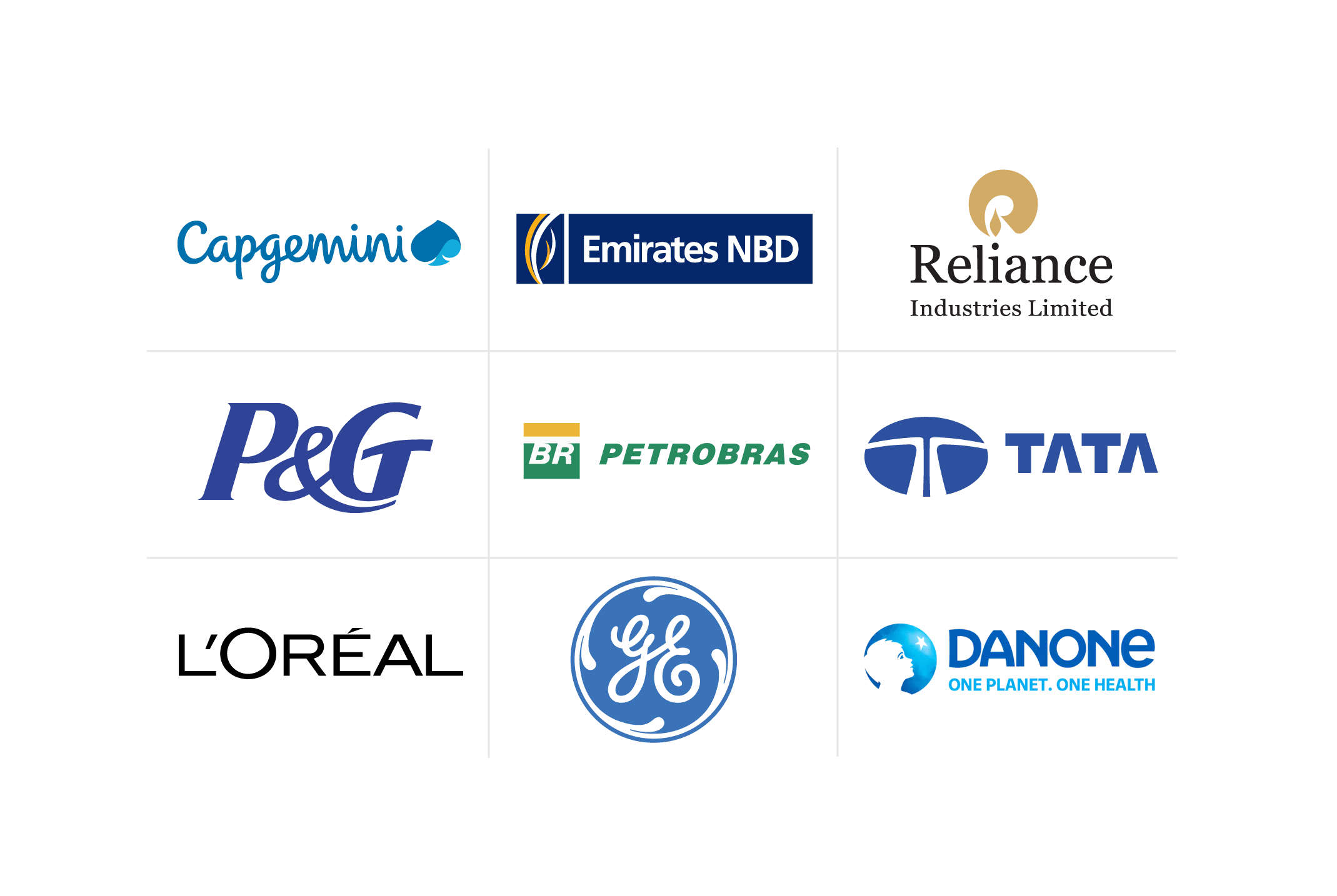HyFlex: Navigating the Future of Corporate Learning
With the HyFlex model, corporate learners are in the driver’s seat. This model allows learners to personalize their learning pathway, accommodating modern professionals' diverse technological and lifestyle needs.
![[Featured Image] A young businesswoman puts her company’s HyFlex corporate learning strategy to use while on a break.](https://d3njjcbhbojbot.cloudfront.net/api/utilities/v1/imageproxy/https://images.ctfassets.net/2pudprfttvy6/3jKEh4vSJmwKiBU0yRb9EW/64363bce967937c3f60c4d69319e85ae/GettyImages-2082761522.jpg?w=1500&h=680&q=60&fit=fill&f=faces&fm=jpg&fl=progressive&auto=format%2Ccompress&dpr=1&w=1000)
The corporate world is changing, and many workers are now seeking flexible, remote-friendly working environments with ongoing training and development opportunities. As talent pools evolve to look for different benefits, it’s up to organizations to meet new demands and find ways to remain competitive in a new environment. While training efforts are a great way to attract and retain workers, providing personalized learning opportunities to accommodate different employee needs is essential. As an employer, the HyFlex model can be a great way to offer personalization options without sacrificing course quality.
What is HyFlex learning?
HyFlex, a combination of the terms “hybrid” and “flexible,” is an educational model that prioritizes the learner. It combines face-to-face and online learning options into an integrated classroom design. This course design offers a flexible, engaging learning method for your workforce, leveraging digital technology to benefit you and your employees.
This blended learning approach allows employees to choose how to engage with the material, tailoring their educational experience to their individual needs, preferences, and circumstances. For example, employees who don’t have access to fast technology at home might come to class and participate in person. Another employee with family responsibilities might opt to participate online and reduce travel time.
In a HyFlex learning model, learners can usually choose from three options: attending sessions live in the classroom, via real-time online platforms (such as Zoom), or accessing recorded materials. Learners can select their participation option each week, allowing them to adapt based on lifestyle factors at a given time.
Read more: Fostering a Learning Culture within Your Company: Your 2024 Guide
The origins of HyFlex learning
Dr. Brian Beatty created this learning concept at San Francisco State University in 2006. This model was initially designed to address limited physical classroom space and varying learner availability to provide uninterrupted, continuous learning opportunities for all students. The COVID-19 pandemic accelerated the adoption of this model, as it continues to provide learners access to learning materials without the required physical presence.
While universities and colleges are among the typical users of the HyFlex learning model, you can leverage its principles when designing corporate training. By modeling courses after successful academic models, you can adapt corporate training and learning initiatives to cater to different employee needs.
Fundamental principles of HyFlex learning
This model provides a versatile framework to accommodate diverse learning needs and allows working professionals to fit their learning alongside other responsibilities. While models look different depending on the course content and learner population, HyFlex courses should offer:
Choice of participation options
HyFlex models provide learners the autonomy to choose between attending sessions in person or virtually. If they can’t participate in sessions live, HyFlex models allow learners to access recording materials later. It increases accessibility to those with different technologies and varying lifestyle factors.
Virtual and in-person collaboration
The HyFlex course design accommodates both in-person and virtual learners at the same time. When designing a HyFlex course, your goal should be to develop an environment where virtual and in-person participants can interact with each other. This interaction helps create a space where every learner can engage in class effectively.
Equivalent learning outcomes
Regardless of their choice of participation, students should have the same learning outcome. Each course should maintain high educational standards across all formats, and no learner should have an advantage over another because of their participation option.
Resource availability
Your HyFlex course provides flexible learning paths by offering reusable materials for all learners to access outside class. These may include recorded lectures, comprehensive notes, discussion forums, and downloadable files, which allow learners to revisit content as needed.
Advantages and challenges of HyFlex learning
HyFlex learning offers several advantages when adapting training to modern corporate needs. However, when implementing this learning system in your environment, you should also be aware of potential challenges and proactively navigate any obstacles.
Advantages
The HyFlex learning environment creates a course structure that is more accessible to different types of learners than traditional models. In a corporate context, HyFlex models can reduce the need for physical training spaces and allow for more extensive training sessions without additional costs. Instructors can also reuse recorded materials several times, which can save time and costs down the line.
In addition, the flexibility of HyFlex models can accommodate varied employee schedules, allowing each person to participate in ways that work best for them. If one employee has meetings during class on certain weeks, they can participate asynchronously at those times.
Increasing autonomy during these training sessions may also lead to higher satisfaction and retention rates over time. Research has shown that increased learner choice leads to higher learner satisfaction rates. Also, cultures of corporate learning generally increase employee engagement and retention.
Challenges
One of the HyFlex model's biggest challenges is its reliance on instructors' preparedness. Your instructors have to cater to several learner types at once, ensuring learners have equitable experiences in each class, in-person or virtually.
Another challenge of the HyFlex model is that learners need to be self-disciplined, especially when accessing material remotely. Learners may use virtual options to avoid classroom activities or instructor attention if they do not actively participate in their education. In addition, students attending virtual classes may feel they have limited engagement with other students unless the instructor makes a concentrated effort to facilitate class interaction.
While early research is promising, the lack of research on the success of HyFlex models can make it challenging for corporations to decide on the best design elements for their training models. In this case, taking time to try different setups and ask employees for their feedback can help you choose a model that is right for the needs of your workforce.

How to implement HyFlex learning into your workspace
When developing a HyFlex class, the first step is to treat your course as if it’s entirely online. This helps ensure you set the class up for online learning and that learners taking advantage of virtual options will have the materials they need to succeed. In general, you should keep these tips in mind before class, as your class begins, and during class:
Before class
Before your class begins, you’ll need to review your materials and ensure you share everything online for students. You might prep short videos or readings for students to access and provide resources with clear classroom expectations. Materials include deliverables expected from learners, participation guidelines, and instructions for accessing lectures virtually.
Setting up a HyFlex classroom takes time and effort, so you’ll need to set aside time to test different technology options and find the proper setup for your particular course structure. Before class begins, set up your technology early to account for any unexpected obstacles.
Beginning of class
As your class begins, remind yourself to share your screen so virtual learners can see and hear the material. If you are videoing a whiteboard or document, set aside some extra time to ensure your focus, angle, and quality are high enough for all learners to engage and participate. If you are recording your session, you’ll need to let online learners know to avoid any privacy concerns.
During class
During class, structure activities in a way that encourages participation for everyone. Doing so might involve periodically checking for questions from online learners, including in-class reflections, and creating virtual breakout rooms for discussions. You might also incorporate online collaboration tools, such as Google Forms or Google Docs, for in-person and virtual learners to share ideas.
You should also be mindful of structuring activities to ensure a level playing field for all learners. For example, a closed-book exam may not be a fair assessment method when half the class is online and out of view while the rest is in direct eyeline.
Technology to consider when designing a HyFlex classroom
Equipping classrooms with high-quality video conferencing installations or using simple setups like podium projectors with Zoom technology is vital. Other technologies to integrate into the design include the following:
Audio enhancements: Distribute microphones throughout the room to ensure that everyone can hear one another.
Visual aids: Implement whiteboard cameras, document cameras, and annotation monitors to help visualize concepts better.
Virtual tools: Virtual whiteboards and microphones are used for real-time collaboration and are designed to pick up speech clearly in a classroom setting.
Read more: Fostering a Learning Culture Within Your Company: Your 2024 Guide
Build your HyFlex model with Coursera
The HyFlex learning model allows learners to participate in person or virtually and access materials synchronously or asynchronously. By integrating HyFlex learning into your workspace, you can improve the effectiveness of your corporate training programs. By carefully considering your course planning and technological integration, you can successfully implement this learning structure in your workplace.
Coursera for Campus empowers any university to offer job-relevant, credit-ready* online education to students, faculty, and staff. With Coursera for Campus, you can promote student employability by teaching in-demand skills for high-growth fields and help students master job-ready skills with Guided Projects, programming assignments, and in-course assessments—online, offline, and via mobile. Enable faculty to create projects, assessments, and courses tailored to learner needs with Coursera for Campus.
With the Coursera learning platform, you can control the virtual component of your course design with a diverse array of top-rated courses, Specializations, and Professional Certificates. For example, the Business Foundations Specialization offers a flexible course series that guides learners through fundamentals related to finance, marketing, accounting, and more.

This content has been made available for informational purposes only. Learners are advised to conduct additional research to ensure that courses and other credentials pursued meet their personal, professional, and financial goals.

